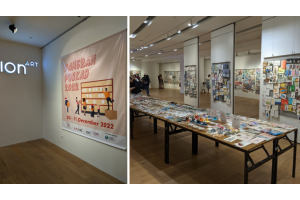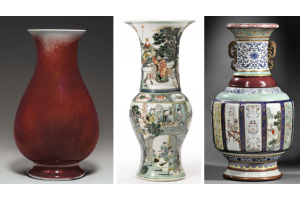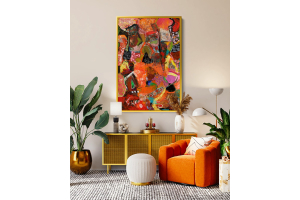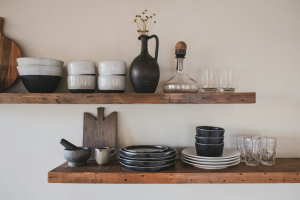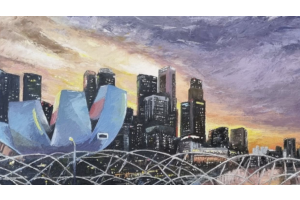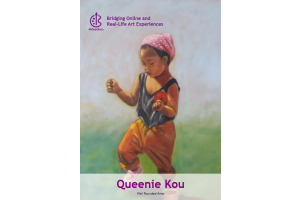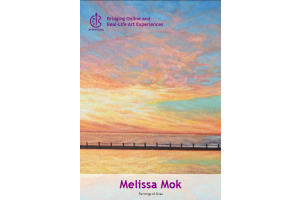Yip Yew Chong - I Paint my Singapore Exhibition
-
January 10, 2024
Exhibits
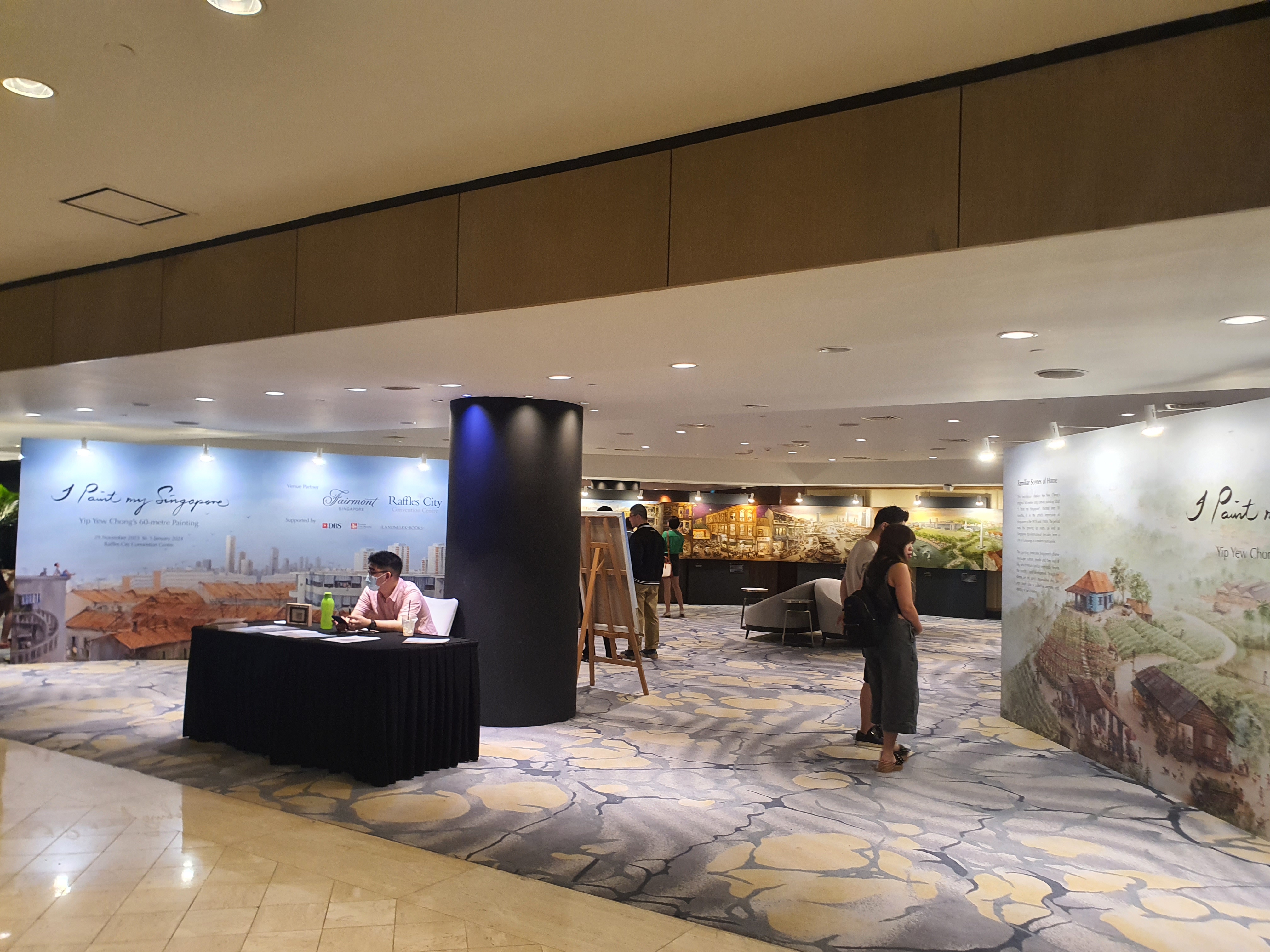
Written by : Ooi Jian Hui
As I step into the captivating world of Yip Yew Chong's "I Paint my Singapore" exhibition, I find myself enveloped in the sheer grandeur of an extraordinary artwork that spans an impressive 60 meters. Each of the 27 panels, measuring an astonishing 2.2 meters in height and 1.1 meters in width, unfolds like a visual symphony, narrating the artist's cherished memories of the 1970s and 1980s in Singapore. Painted over 18 months, Yip painted the first 26 panels in his studio. When it came to the last panel, he painted it with a live audience at the Tiong Bahru Community Centre.
The panels were not painted in sequence from right to left but rather in the middle and then jumped to sections on the left and the right in a haphazard manner until all the gaps were filled, and the panels were then joined and blended together. In doing so, it provided the flexibility and options to change his mind as he progressed along. As Yip posted his works on his social media each time he finished a panel, he received numerous feedback and new ideas from the public.
It was also not a mean feat to transit from night to day, day to night to create variety as well as swing the mood of the viewer.
As I navigated through the scenes, I felt an intimate connection to the artist's memories and experiences that permeated each stroke of the brush. Yip Yew Chong's reminiscences came alive through the vibrant depictions of Woodlands and Marsiling Hills.

Picture taken during the exhibition
The details of Kampong Lorong Fatimah and the coastal village beside Woodlands Checkpoint echoed the artist's childhood, resonating with the daily rhythms of life near the KTM trains and the checkpoint's routines.

Picture taken during the exhibition
Moving on to Marsiling Hills, the military exercise on the long ridge conveyed not just the tactical maneuvers but the camaraderie and shared challenges faced by those in the platoon. The storm threatening to end the exercise, much to the trainees' delight, added a touch of nostalgia to the artist's military days.

Picture taken during the exhibition
Sembawang & Nee Soon transported me to a hilltop village, overlooking the shipyard and river prawn farms. The scene, lost in time, encapsulated the smells, sights, and sounds of village life. The mist from a hot spring and the overwhelming senses of farm produce resonated with the artist's personal memories of the area.

Picture taken during the exhibition
Bukit Timah, with its biodiversity-rich natural heritage, offered glimpses of the colugo, sambar deer, and the legendary monkey man. The granite quarries surrounding the hill, now turned into lakes, spoke of a bygone era when these quarries supplied granite for building houses and roads.

Picture taken during the exhibition
Thomson Road, one of Singapore's oldest North-South trunk roads, unfolded memories of the Police Academy and Singapore's main TV and radio broadcaster. The scene of a drama being filmed and the distant Pek San Teng cemetery hills painted a nostalgic picture of the area's evolution.

Picture taken during the exhibition
Jurong took me back to school excursions at the Chinese and Japanese Gardens, the bird park, and the science center. The poetic long bus rides and later, journeys on the newly-opened MRT line, echoed the artist's youthful explorations of Jurong in the western part of Singapore.

Picture taken during the exhibition
West Coast, with its vibrant Haw Par Villa, reflected the colorful and somewhat scary theme park by the sea. The ten courts of Hell, once a source of fascination, became a reminder of the park's unique heritage.

Picture taken during the exhibition
The Singapore Strait, with Pulau Seking and its inhabitants, the Orang Selat, became a canvas for the artist's memories of fishermen and workers at Pulau Bukom's oil refineries. The relocation of the islanders in 1994, before the merging of Pulau Seking and Pulau Semakau, added a touch of personal history to the scene.

Picture taken during the exhibition
Collyer Quay & Raffles Place, portrayed in the 1980s, brought an aerial view of the bustling financial district. The floral clock in the open square, the activity at Change Alley, and the timeless architectural structures became windows into the artist's past.

Picture screenshot from https://my.matterport.com/show/?m=zFwuJGUjAqt
Tiong Bahru, with its blue and white wooden blinds and the famous bird corner, captured the artist's memories of a neighborhood undergoing modernization. The blend of old and new, with glass-covered windows and traditional balconies, reflected the timeless essence of Tiong Bahru.

Picture screenshot from https://my.matterport.com/show/?m=zFwuJGUjAqt

Picture screenshot from https://my.matterport.com/show/?m=zFwuJGUjAqt
Kreta Ayer by Day and Kreta Ayer by Night painted vivid scenes of the artist's hometown. The bustling daytime activities, with residents washing, cooking, and engaging in trade and errands, became a vibrant reflection of daily life. The enchanting night scene, with street opera performances seen through the luxury of windows, offered a glimpse into the artist's formative years in his second storey home where he lived for 14 years before it was demolished.

Picture screenshot from https://my.matterport.com/show/?m=zFwuJGUjAqt
Singapore River in the 1970s evoked memories of the artist being awakened by pungent smells as the school bus passed by. The teeming river with boats, cranes, and workers showcased the transformation nearby, as skyscrapers sprouted, changing the landscape forever.

Picture screenshot from https://my.matterport.com/show/?m=zFwuJGUjAqt
Padang, with its satay club and boat races, became a canvas for the artist's memories of the vibrant activities near the sea-facing Padang. The stately civic buildings and monuments, joined by the Merlion in 1972, added a historical touch to the scene.

Picture screenshot from https://my.matterport.com/show/?m=zFwuJGUjAqt
Bras Basah in the 1980s, known as the world of books, unfolded countless weekends spent in the iconic National Library and bookshops along Bras Basah Road. The red-roofed canteen, ice kacang, and the irresistible allure of the area to book lovers resonated with the artist's personal experiences.

Picture screenshot from https://my.matterport.com/show/?m=zFwuJGUjAqt
Orchard Road in the 1980s, with its hip and trendy atmosphere, captured the artist's teenage years. The wide boulevards, cool shopping center atriums, and the eclectic mix of people, from buskers to fervent shoppers, created a nostalgic atmosphere. The artist also encapsulated the first MacDonalds in Singapore at Liat Towers and the iconic Lido Theatre.

Picture screenshot from https://my.matterport.com/show/?m=zFwuJGUjAqt
Serangoon Road in the 1980s depicted Singapore's multiculturalism, with various places of worship and colorful shops. The lively energy of the area, despite being named "Little India," reflected the vibrant diversity of the neighborhood.

Picture screenshot from https://my.matterport.com/show/?m=zFwuJGUjAqt
Waterloo Street in the 1970s, known as "fourth road," showcased a multicultural Singaporean street. The original Guanyin, Sri Krishnan, and Central Sikh temples added historical richness to the scene, along with the depiction of the Albert Street night soil collection center and Sungei Road thieves market.

Picture screenshot from https://my.matterport.com/show/?m=zFwuJGUjAqt
Kampong Glam in the 1970s unveiled Sultan Mosque's dominance over the skyline and the bustling trades around the mosque. Specialist trades like blacksmiths, coppersmiths, and traders added layers of cultural richness to the artist's memories.

Picture screenshot from https://my.matterport.com/show/?m=zFwuJGUjAqt
Serangoon Corridor in the 1970s stretched from Potong Pasir to Hougang, capturing the farmlands and Serangoon River. The supersonic Concorde taking off from Paya Lebar Airport added an element of excitement, making the scene pulsate with energy.

Picture screenshot from https://my.matterport.com/show/?m=zFwuJGUjAqt
Geylang in the 1980s painted scenes of Malaysia Cup nights and the contrasting atmospheres at the red light district Lorong 24. The gathering of residents to watch the cup, the dim red lights, and the mysterious ambiance depicted the old kampong spirit alongside a more mysterious setting.

Picture screenshot from https://my.matterport.com/show/?m=zFwuJGUjAqt
Heartland (School) in the 1980s showcased the void deck of a block of flats, capturing the everyday scenes of life. A funeral, a carpark warden issuing a fine, cleaners clearing the refuse chute, and children playing at a concrete playground created a warm and harmonious nostalgia of heartland life. The artist also captured the long gone practice of school children squatting by the drain to brush their teeth after recess hours.

Picture screenshot from https://my.matterport.com/show/?m=zFwuJGUjAqt
Heartland (Hawker Centre) in the 1980s presented the diversity of life in Housing Board flats. The long corridors with decorated doors, the ground floor shop units and a hawker center offering a variety of food options painted a familiar picture of heartland living.

Picture screenshot from https://my.matterport.com/show/?m=zFwuJGUjAqt
Heartland (Town Centre) in the 1980s, inspired by HDB town centers of the 1970s and 1980s, showcased the focal point of a fountain surrounded by the now defunct Oriental Emporium, cinema, a bus interchange, and a sports complex. The bustling activities captured the essence of heartland life.

Picture screenshot from https://my.matterport.com/show/?m=zFwuJGUjAqt
Katong in the 1970s depicted changes in the seafront due to land reclamation, with conveyor belts carrying soil from Bedok hills. The emergence of Bedok Reservoir in a gaping hole and the rise of Marine Parade on reclaimed land reflected the transforming landscape.

Picture screenshot from https://my.matterport.com/show/?m=zFwuJGUjAqt
Changi Village in the 1970s, amid a storm, exuded mystery with the ghosts of landmarks like Changi Tree and Changi Hospital. The wind and waves carried an air of suspense, evoking stories of the past.

Picture screenshot from https://my.matterport.com/show/?m=zFwuJGUjAqt
Tekong & Ubin in the 1980s took me back to the artist's Junior College days, camping, hiking, and canoeing in Pulau Ubin and Pulau Tekong. The fear of "stand by bed," the enjoyment of the obstacle course, and the dread of book-in rides on the RPL captured the essence of National Service.
As I stood amidst Yip Yew Chong's vivid recollections, I couldn't help but marvel at the artist's ability to transport me through time and space. The exhibition became not just a display of paintings but a journey into the artist's memories and a personal odyssey through Singapore's rich tapestry. The blend of nostalgia, imagination, and historical accuracy showcased the power of art to evoke emotions and create a shared sense of heritage.
Each stroke of the brush was a brush with the past, and each scene unfolded like a cherished memory, making the exhibition a testament to the enduring magic of storytelling through art.
Leaving the exhibition, I am filled with a profound appreciation for the artist's ability to capture the essence of time and place, creating an immersive experience that transcends the boundaries of traditional art. Yip Yew Chong's "I Paint my Singapore" is not just an exhibition; it's a captivating journey through the vivid tapestry of Singapore's cultural and historical landscape. Yip is indeed a national legend in the Singapore art community.


 PREVIOUS ARTICLE
PREVIOUS ARTICLE 

